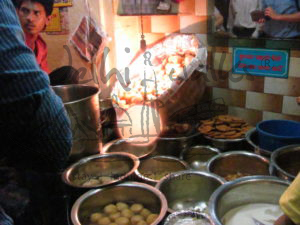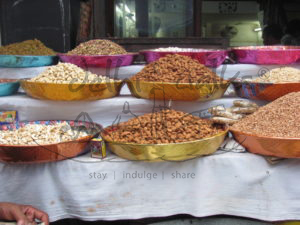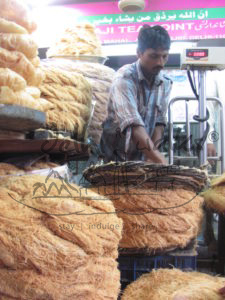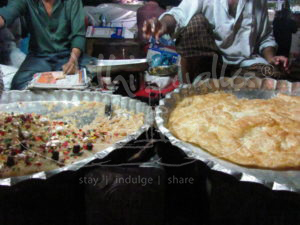The Six Days of Bengali Homecoming: Durga Puja
Light misty clouds, cold winds around, coconut husk burning with light coal in earthen pots, and beautiful pandaals around the city are the significant markers that Durga Puja is round the corner. While Durga Puja is celebrated every year in the auspicious month of Ashwin (September-October) and commemorates the victory of Lord Rama over the demon king Raavan, it is a Bengali homecoming for all the Bengali’s. While the whole world likes to reiterate, that India is a land of festivals, we never fail to prove them wrong. We are super pumped and geared to take you for an exciting journey through the pandals of Delhi, and let you immerse into the culture that is associated with Durga Puja!
Durga Puja as a festival marks the battle of Maa Durga with the powerful demon king Mahishasura, and subsequently her emergence of the victorious over the evil. The story goes that Mahishasura was considered ‘immortal’ because of the boon that he had received from Lord Brahma, after he had performed severe austerities and prayers. Lord Brahma was pleased by his devotion, he conferred upon him many boons and a very important boon was of Mahishasura’s death in the hands of a woman, which he did not pay heed to. In Durga, the gods bestowed special powers, where she had ten hands and each carrying lethal weapons. Mahishasura thought that he was near to immortality considering the fact that no woman could match his strength.
With this strong feeling of power, he waged a war against the Devas, with his powerful army of Asura’s. In the battle, when the Devas were defeated they approached Shiva, Brahma and Vishnu for help, thus resulting in the great gods combining all their energies in one woman who was Durga, the embodiment of Shakti. She fought a lone battle with Mahishasura, and is known to have defeated the army all by herself. The auspicious nine days of Navratri is the time which marks the start and end of the battle.
The main tableau consists of the goddess who is usually seated on a lion, with her four children-Kartikeya, Ganesha, Lakshmi, and Saraswati.
Traditionally, huge clay models are made of the goddess and beautifully decorated, with embellishments. Huge canopies are well decorated with temporary bamboo poles with decorative fabric is used to decorate the place, known as pandals.
A Durga Puja experience not only gives you an insight into the culture and the reunion of the Bengalis in these auspicious days, but also opens a wide array of cultures, as not only Bengalis but people around the world come and celebrate in the Dhunochi Naach. A form of dance where people showcase their talent with a coconut husk burning earthen pot on their heads, hands and mouth. While the mornings are usually tranquil with small puja which is performed called Anjoli, later in the day each pandal has a set of activities lined up for kids, as well as adults to keep people engaged for forthcoming days. Of all the days, if there is one highlight day which can describe and epitomize the battle of Maa Durga, it is Mahaashtami. Every year, the priests take much rigor to perform the rituals, from chanting the mantras with the perfect tone, to people gathering to pay their respects for what Maa Durga stands, it is an experience to remember!
All over India, Durga Puja is celebrated with much fan-fare. While it’s a celebratory mood throughout West Bengal, Orissa and Assam, it is a small affair in other parts of the country. Delhi is the window which provides us a glimpse of the diverse country that we are, has a fan fare which is unmatched. Don’t be surprised if you see a pandal which conducts Dandiya nights as well. We are bred with cultural immersions! While Delhiites, would not stop working on those six auspicious days, unlike West Bengal, but it would also not be away from the celebrations.
In Gujarat, surprisingly, another avatar of Durga, Amba, is worshipped. As celebratory as it can get, the rituals are succeeded with a community dance ‘Dandiya’ where men and women, come in beautiful, vibrant dresses, after dinner specifically, they start their community dance, which goes on till midnight. The communitarian dance happens every day throughout the Navratri.
While Delhi gears up for another round of Durga Puja, we sneak into the history of Pandals in Delhi. The earliest known durga puja Pandal was organized as early as 1911, when the British had shifted their capital to Delhi, some prominent Bengali administrative officers had come over and settled here. To get the feel of home away from home, they came up with their small pandals. With each passing year, people are getting more rooted to their traditional ways of puja with some minor tweaks in time. Join us and immerse yourself in the various colours of Durga puja.

























